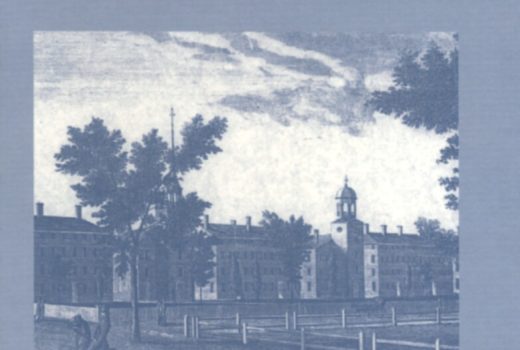 Liberal Education for a Land of Colleges: Yale’s Reports of 1828; David B. Potts; Palgrave MacMillan; 2010.
Liberal Education for a Land of Colleges: Yale’s Reports of 1828; David B. Potts; Palgrave MacMillan; 2010.
Liberal Education for a Land of Colleges: Yale’s Reports of 1828, is, in a sense, three small books under one cover. David Potts, an academic residing in the Pacific Northwest, was originally introduced to the documents more than 40 years ago as part of a graduate-level study of the history of American education. Ever since, in his role as a professor of American history and an academic dean, he has carried the torch for what he describes as one of the great, underappreciated documents of American higher education history—a precursor to the influential writings of Harvard’s Charles Eliot and other reformers decades later.
The Yale Reports, reprinted here in scanned form from the original, make up one part of the book. The other major part of the book is Potts’s own analysis and appreciation of the Reports—an attempt to provide context for the document and its relevance to understanding the development of colleges in the U.S. As a third major element, Potts has included documents from Amherst College and Harvard that are similar to and contemporary with the Yale Reports and to which, in some measure, the three authors of the Yale Reports—Jeremiah Day (Yale’s longest-serving president), James Kingsley (professor of Latin, Greek and Hebrew), and Gideon Tomlinson (governor of Connecticut)—wrote in response.
The Yale Reports provide a comprehensive snapshot of the issues stirring higher education and an interested public in the 1820s. The Reports were authored at a time of rapid change in the U.S. and similar change in the academic world. The nation was about to embark on an expansion in the number of colleges it sustained, just as settlement began to rapidly spread westward across the land. According to sources cited by Potts, there were 56 colleges within the country in 1830. This number grew to 203 in 1860 and 370 in 1890. This growth trajectory was accompanied by a tectonic shift in other areas of the academic enterprise as well. A familiar demand was heard for vocational education that would produce men of business, ministers and engineers. Most obviously, “reformers” sought to relegate the ubiquitous study of Latin and Greek from central elements in the curriculum to mere electives.
To illustrate the point, Potts includes a summary of Yale’s rather hidebound freshman curriculum at the time, which included:
I.
- Livy, three books
- Adam’s Roman Antiquities
- Arithmetic reviews
- Day’s Algebra begun [a text authored by one of the Yale Reports authors]
- Graeca Majora begun
II.
- Livy continued through five books
- Graeca Majora, continued through the historical part
- Day’s Algebra finished
III.
- Horace begun
- Homer’s Iliad; Robinson’s
- Playfair’s Euclid, five books
Much of the change that Yale considered at this point was modeled by Amherst College. Amherst had seen remarkable growth in enrollment during its first six years, thanks in part to its new curriculum. It seemed it “might soon have more undergraduates than the venerable Harvard and rank second among the nation’s colleges,” noted Potts; much to the discomfiture of its New England neighbors who often saw proportional declines in their own student numbers. This may have been a direct result of Amherst’s appeal or it might have related to another Potts observation, namely that many well-to-do fathers had begun to question the utility of any kind of college education for their sons.
However, in the face of these competitive challenges, and to answer the critics of higher education in general, the three authors of the Yale Reports (often mistakenly reported as only two, Potts notes), took a careful look at the curriculum and educational approaches used at Yale and found them already evolving, albeit with traditional courses still very much ascendant. In fact, the authors took pains to connect the traditional curriculum to the purposes of college education itself. “The two great points to be gained in intellectual culture, are the discipline and the furniture of the mind,” the authors declare.) But these worthy aims also had to be tempered by attention to practical realities. “A most important feature in the colleges of this country is, that the students are generally of an age which requires, that a substitute be provided for parental superintendence” (Italics in original). Potts, in his explanation of this particular statement, points out that contemporary college administrators had had to contend with a variety of student disorders, including an “uprising over the quality of food” at Yale itself.
Above all, Potts points out that the Yale Reports helped sharpen “the emerging distinction between undergraduate and graduate studies and between liberal as compared to vocational or professional education.”
For readers not steeped in the early history of higher ed, there are implicit lessons for today about the challenges institutions must always master if they are to remain relevant in changing times, in particular the need to balance tradition and innovation. Furthermore, notes Potts, “Yale’s Reports of 1828 is an excellent starting point for exploring the core ends and means of a liberal education in a democratic society.”
Reviewed by Alan R. Earls, a Boston-area writer.
[ssba]
